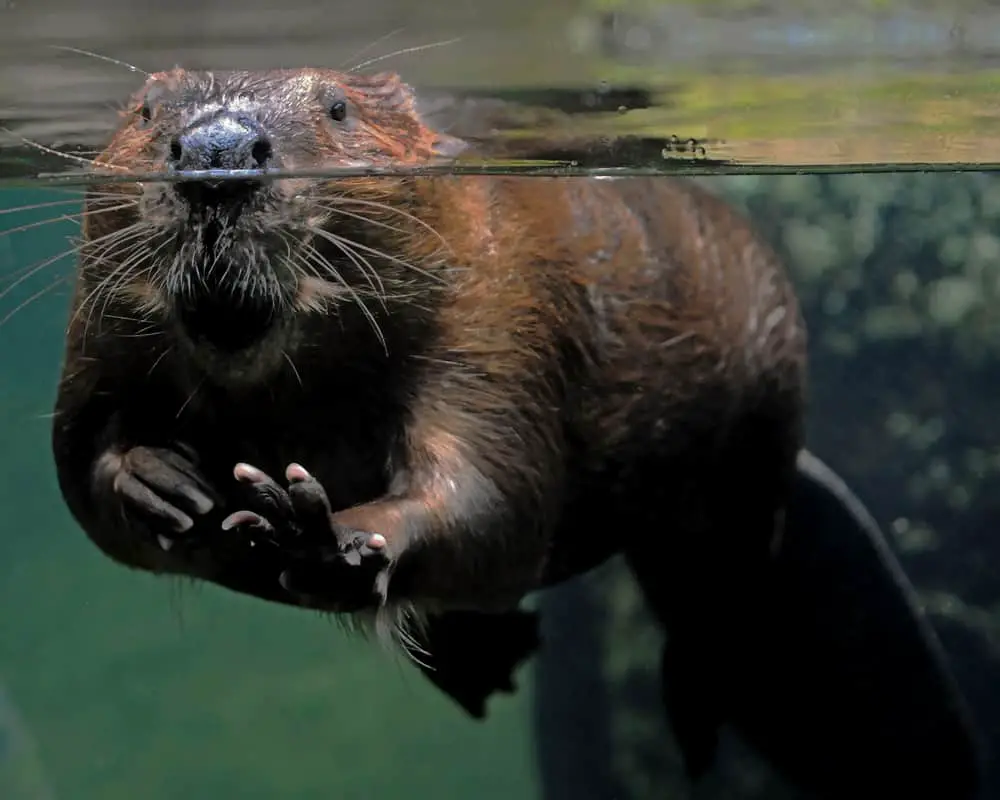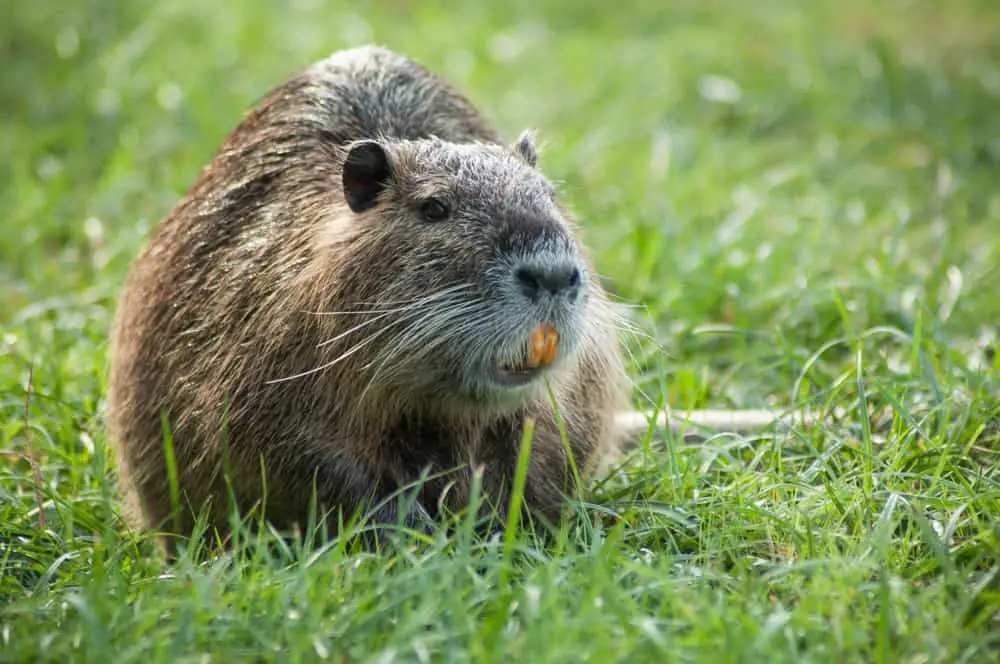
Beavers are a type of semi-aquatic mammal that are part of the rodent family. There are two species of beaver. The Eurasian Beaver is found in Europe and Asia, while the more common North American Beaver is native to most of Canada and the U.S. though it was introduced as far south as Chile.
Both species are found in freshwater rivers, streams, and ponds where they build their elaborate homes from trees, branches, and mud.
They are low-slung animals that are better suited to the water with their webbed feet and a large, flat tail that acts as a rudder as they swim. They can be quite large, weighing as much as 70 pounds, though on average they are closer to 50 pounds. At maturity, beavers may be up to 1.5 feet tall and between 2.5 and 3 feet long.
The famous image of the beaver is one of the long-toothed, furry, brown animals gnawings on riverside tree trunks which it uses to make its famous beaver dams. They drag the fallen trees down the banks, into the water, and maneuver them into place. They use their tail to slap mud onto the floor and walls of the structures which can wind up being over 10 feet high.
Beavers are strict herbivores and eat twigs, leaves, and the soft inner bark of deciduous trees like cottonwoods and aspens. Whether building its home or foraging for food, gnawing on the trees is essential to wear down its front teeth, which, like other rodents never stop growing. While a beaver may only live for about 10 years, the dams may be repaired and recycled for generations.
Table of Contents
Nutria

The animal most frequently mistaken as a beaver is one that few may have heard of. The nutria is also a semi-aquatic, brown, herbivorous rodent. The nutria is most commonly found in South America though there are some colonies in the coastal areas of the U.S. Gulf Coast. Though they are considered to be large rodents, they grow to be only … Read the rest of the story.
No comments:
Post a Comment